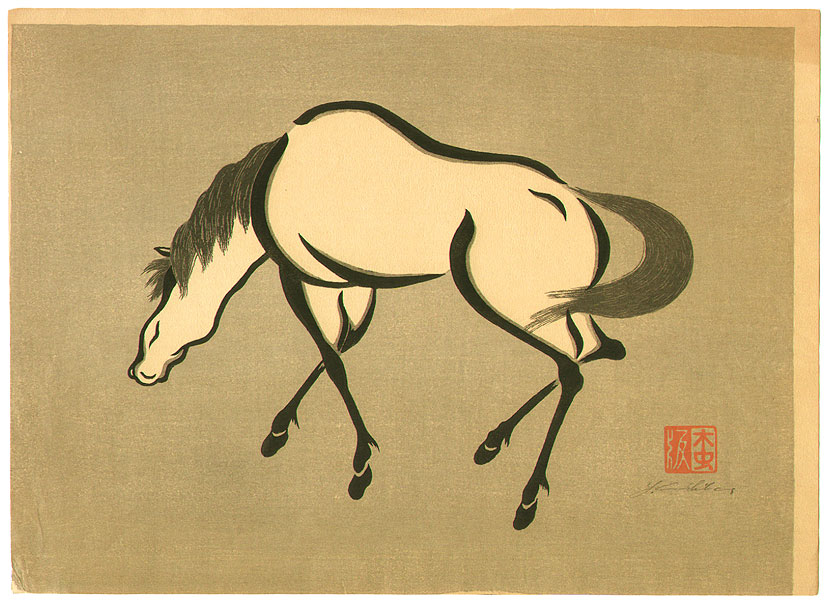Leave it to Issa to give us this slice of life from back in the day.
夕暮や馬糞の手をも菊でふく
yūgure ya ma-guso no te wo mo kiku de fuku[1]
this evening
wiping horse poop from my hand
using a chrysanthemum
—Issa[2]

Not a whole lot to say here; what you see is very much what you get. This haiku does actually fit quite well with the entire haikai movement, one of the goals of which was to get away from the lofty images of old poetry and better reflect real life—to be more raw in other words[3]. Even the great Bashō had at least one haiku about animals being animals.
From his epic Oku no Hosomichi trip, Bashō wrote:
蚤虱馬の尿する枕もと
nomi shirami uma no shitosuru makura moto
plagued by fleas and lice
now a horse pissing
near my pillow
Real life, eh?
Having said that, if you want to really try to read something into Issa’s haiku, he could be making some comment on the imperial house, whose crest is a chrysanthemum. If that were the case, I doubt he would be saying he disapproves of them, rather that the military government (the shogunate) is treating them badly.
I somewhat doubt that’s the case here, however. Issa didn’t often make political comments and preferred to focus on the human experience and the humor of everyday life—fitting themes for haikai.
It’s more likely a simpler statement that as beautiful as a chrysanthemum is, it is only a thing and can be used for purposes other than simply admiring. Instead of making a value judgement of poop or flower we should just appreciate them for what they are. The Buddha is just as comfortable sitting in a pile of shit as he is on a quiet mountain.
What do you think?
Chrysanthemum (kiku) is a season word for all of autumn, by the way, which is the season we are currently in according to the traditional calendar.
[Last updated 25 July 2025]
-
In addition to that, haikai was short for haikai no renga which was a type of renga that emphasized the normal experience of everyday life rather than the court. Renga then was a type of collaborative poetry that was popular at the time. The first verse was 5–7–5, the second 7–7, then subsequent verses went back and forth. Many to most classic haiku we have were actually the first verse of a longer renga. ↩